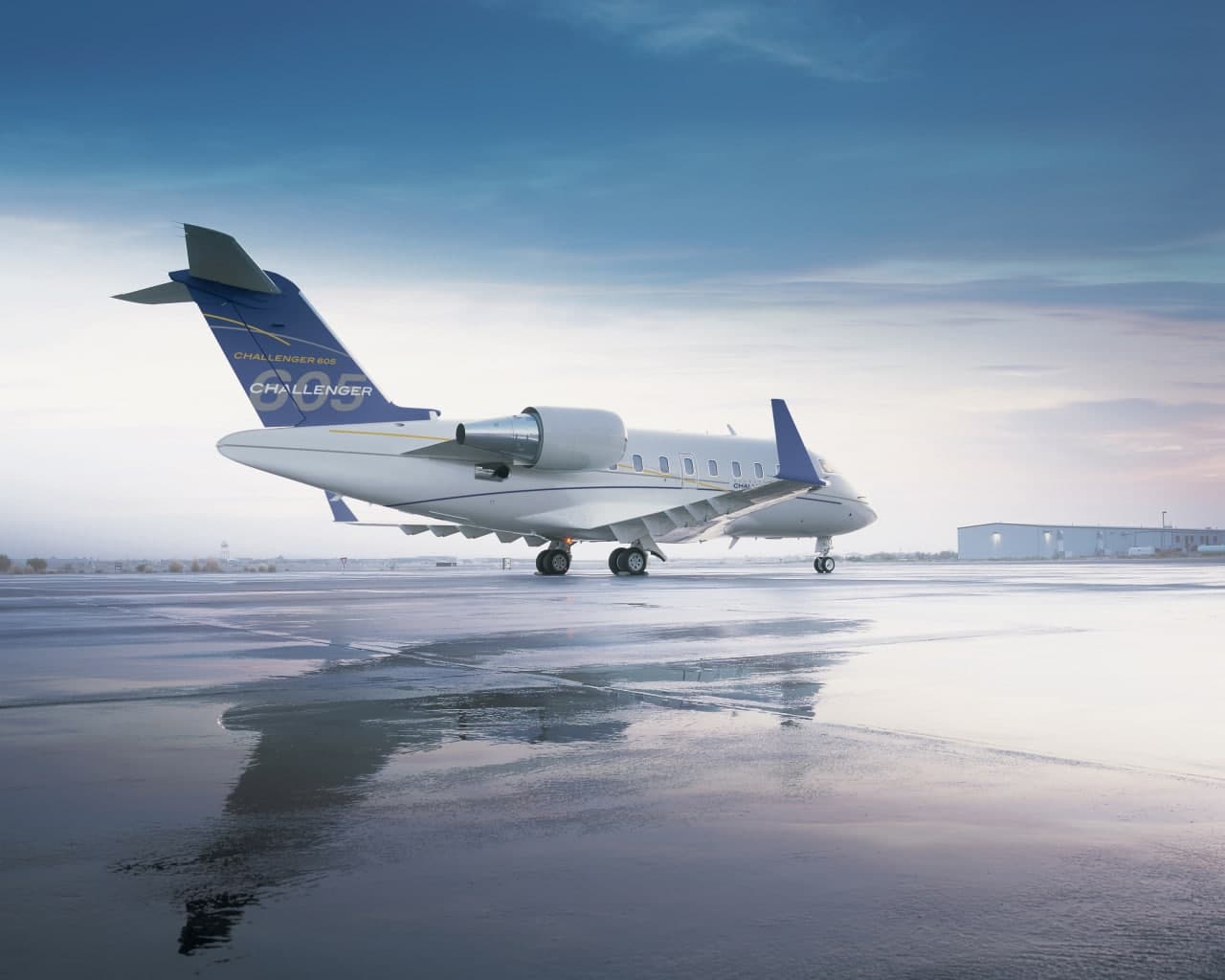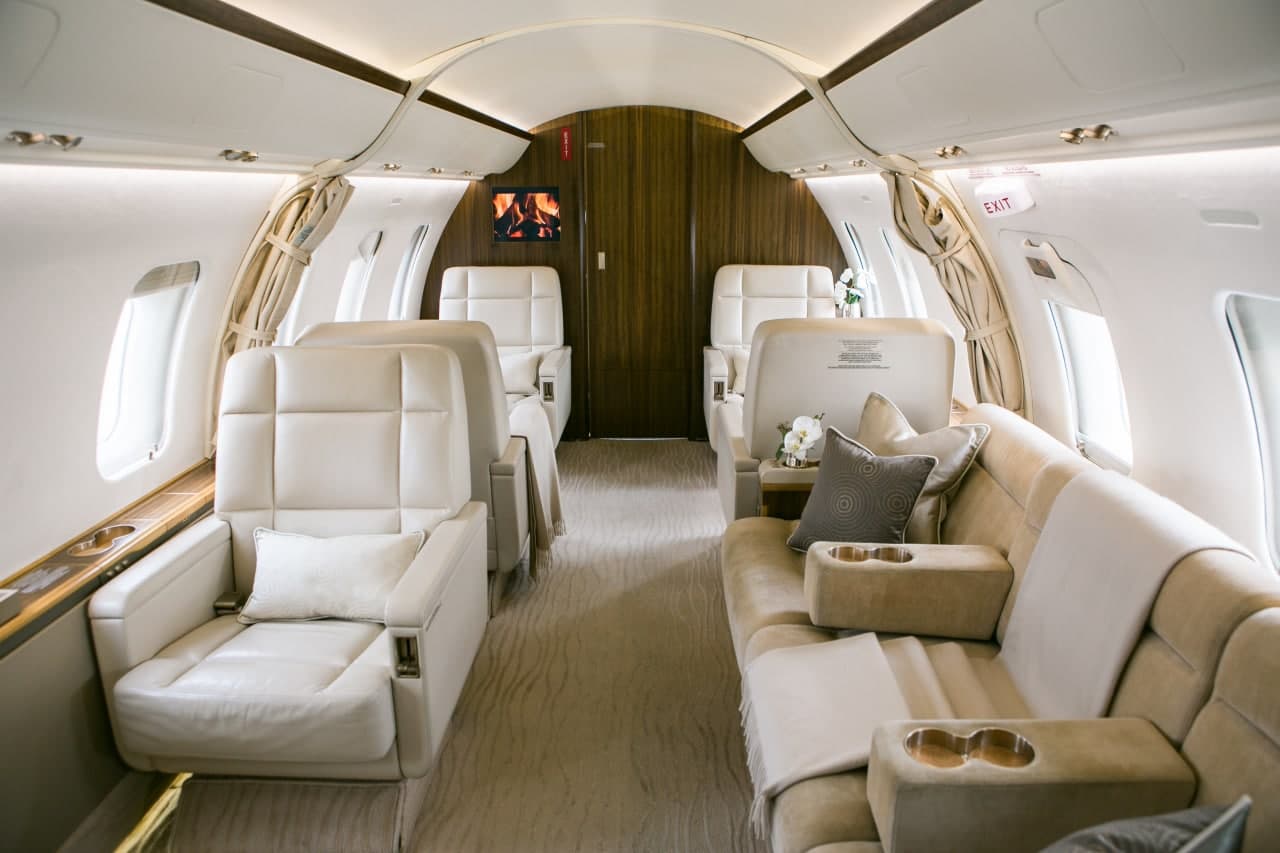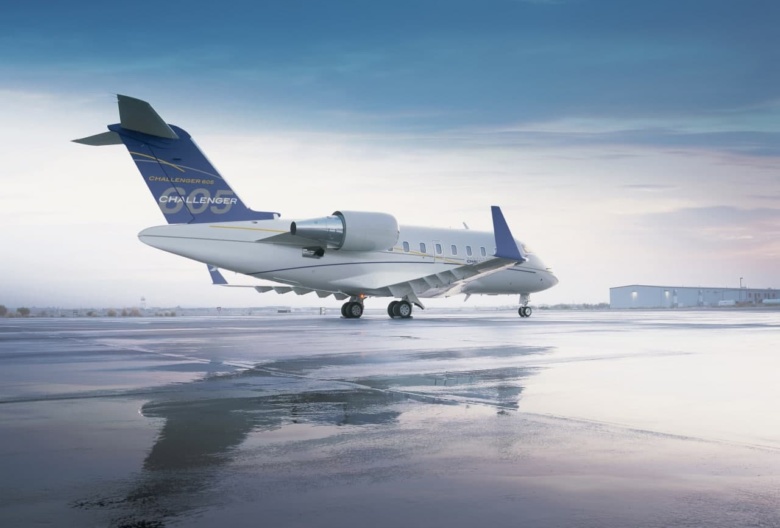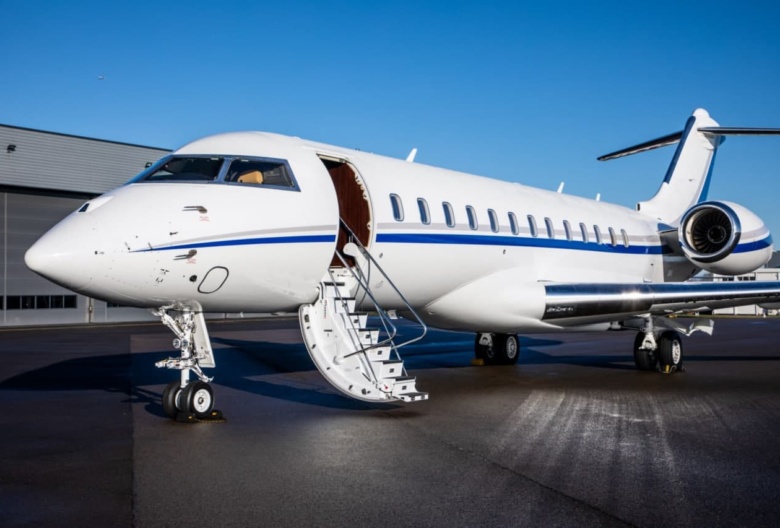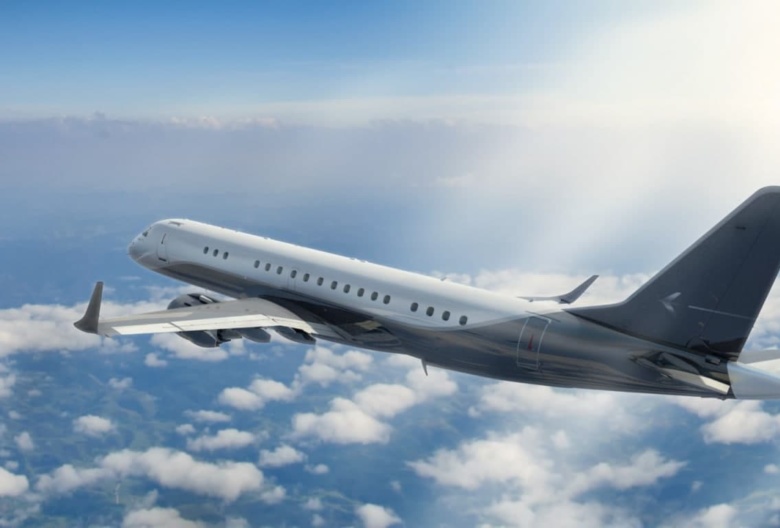The Bombardier Challenger 605 is one of the world’s best-selling families of large business jets due to its spacious interior, superior strength, reliability, and cost-efficiency. The Bombardier Challenger 605 features an advanced cockpit, increased cabin comfort, and can carry 9 to 12 passengers across oceans and continental distances.
More about the Challenger 605
The Challenger series of business jets is one of the headliners amongst the Bombardier fleet. Building upon the excellence of the Challenger 604, the 605 offers modern improvements in virtually all areas. The 605 is the fifth generation Challenger, that is the result of Bombardier’s efforts to improve the Challenger series. The 605 improves and upgrades various components, while preserving the signature features of the previous Challengers.
Key Features of the Challenger 605
Although the avionics system of the Challenger 604 was considered revolutionary at the time, Bombardier has made the decision to replace the previous Pro-Line 4 system with the new-and-improved Rockwell Collins Pro Line 21 Integrated Avionics System for the Challenger 605. Notable improvements include a larger display, a better pilot interface, and fewer control panels, allowing the pilot to operate the aircraft more optimally. Supplementing a powerful duo of General Electric CF34-3B engines, the Challenger 605 can handle virtually any mission at hand. The 605 also boasts a 200 lb payload improvement over its predecessor thanks to optimal weight distribution and improved fuel economy. The 605 is designed to have seamless and straightforward maintenance procedures, which reduces the cost of operations for owners, operators, and end-users.
Performances of the Challenger 605
The Challenger can comfortably accommodate 9 passengers, with a maximum passenger capacity of 13, plus three crew members. The 605 presents A 30% increase in natural lighting and a comfortable open-air atmosphere above its predecessor, thanks to larger windows. Other improvements include a larger LCDs, better worktables, improved lavatory, upgraded cabin electronic system, and an upgraded kitchen. The cabin is an impressive 28′ 3″ long, 8′ 2″ wide, and 6’1″ tall, making it the widest stand-up cabin in its category.
Aircraft Size
| Length | 68.40 ft (20.85 m) |
| Wing Span | 64.34 ft (19.61 m) |
| Height | 20.67 ft (6.30 m) |
| Bag. Capacity | 115 ft³ (3 m³) |
Cabin Size
| Length | 28.41 ft (8.66 m) |
| Width | 8.17 ft (2.49 m) |
| Height | 6.08 ft (1.85 m) |
| Area | 1,151 ft³ (33 m³) |
Aircraft Seats
| Max Seating | 19 |
| Typical Seating | 12 |
| Pilots | 2 |
Performance Specifications
| IFR Range | 3,879 nm (7,184 km) |
| Cruise Speed | 488 KTAS (904 km/h) |
| Certified Ceiling | 41,000 ft (12,497 m) |
| Rate of Climb | 4,450 ft/m (1,356 m/m) |
| Takeoff Distance | 5,840 ft (1,780 m) |
| Landing Distance | 2,779 ft (847 m) |
| Max Takeoff Weight | 48,200 lbs (21,863 kg) |
| Max Landing Weight | 38,001 lbs (17,237 kg) |
| Useful Weight | 21,150 lbs (9,594 kg) |
| Payload with Full Fuel | 1,151 lbs (522 kg) |
Aircrafts Available
The Bombardier Challenger 605 is one of the world’s best-selling families of large business jets due to its spacious interior, superior strength, reliability, and cost-efficiency.
The Bombardier Global 6000, an ultra-long-range business jet manufactured by Bombardier Aerospace Company, maintains a cruising speed of 580 mph and can accommodate up to 18 passengers and 2 crew members.
The Bombardier Global 5000, a development of the Bombardier Global Express with a shortened cabin, the Bombardier Global 5000 provides ample seating for up to 19 passengers and has a maximum range of 4,800 nautical miles.
The Embraer Lineage can seat 13 to 19 passengers in a luxurious, comfortable, and oversized cabin, fitted with Wi-Fi technology, internet access, an electronic flight bag (EFB), three lavatories, and one stand-up shower.
